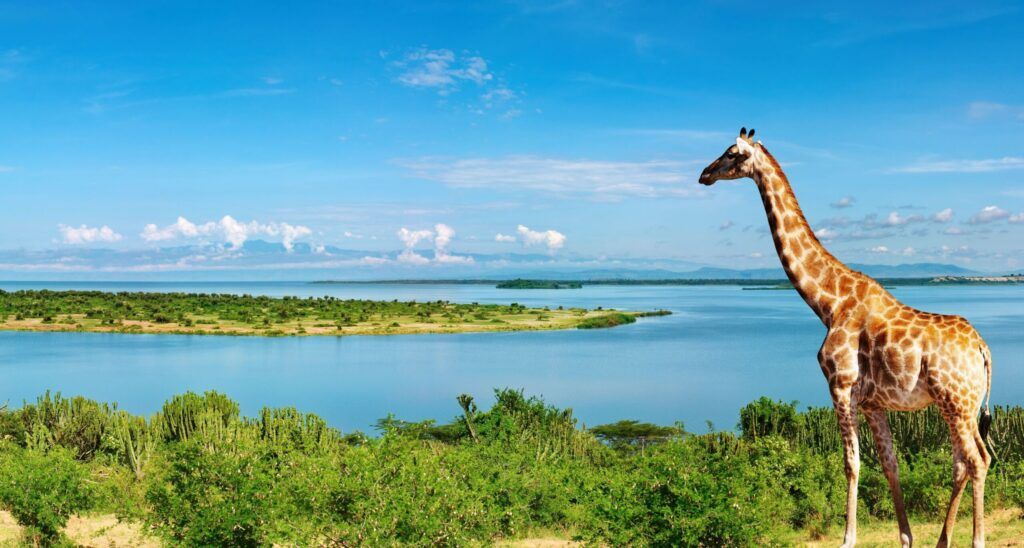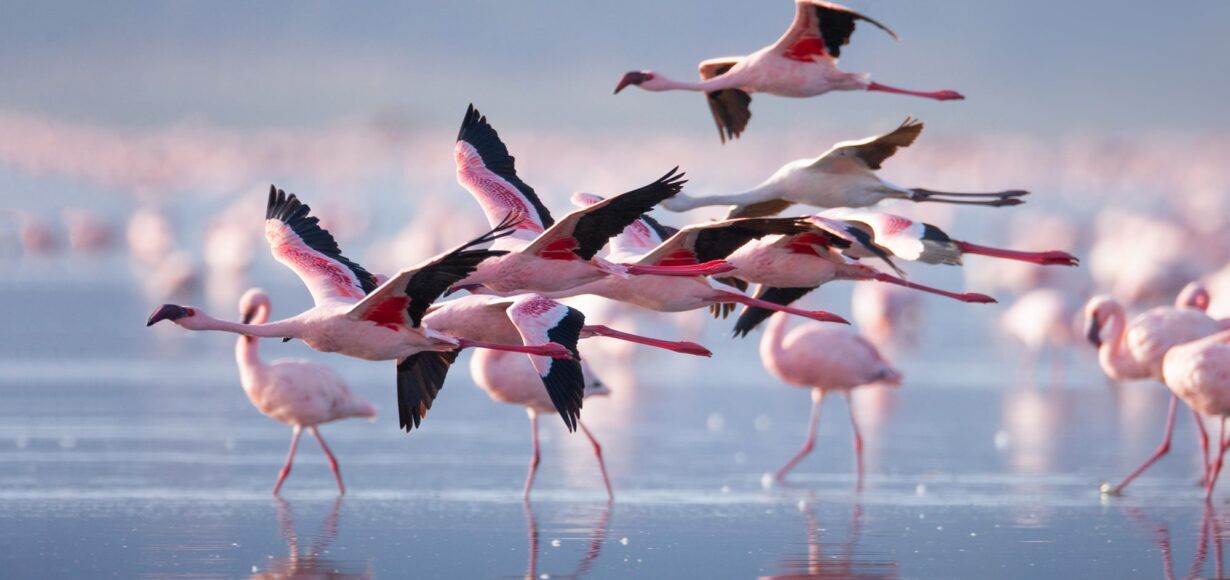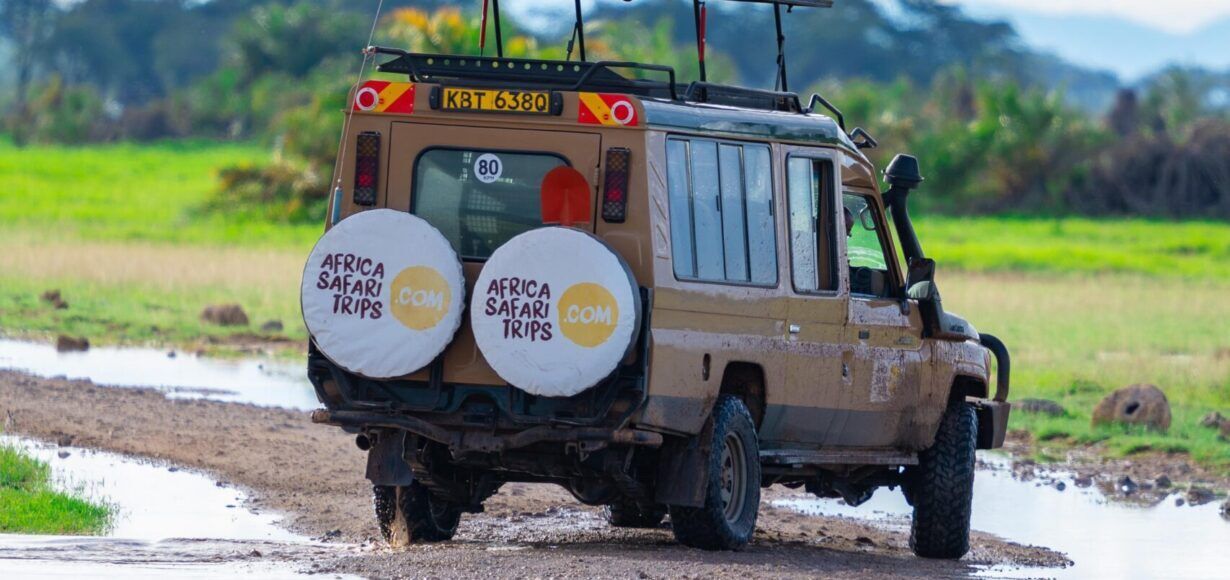- 24/7 service
- All accommodations
Queen Elizabeth National Park covers approximately 1,978 square kilometres (764 square miles), is named after Queen Elizabeth II and one of Uganda’s most famous and oldest parks. While the name might evoke thoughts of royalty, this park is all about celebrating the majesty of the animal kingdom. The park’s unique landscape, ranging from savannah plains to lush forests and wetlands, creates a haven for a wide array of creatures. During your safari you’ll see what we mean: no matter if on foot, on a boat or in a 4×4 vehicle, exploring the park’s wildlife is a feast for all senses.
A very special meet-and-greet
Yes, you can meet them here, four of the famous Big Five: lions, leopards, elephants and buffalo. Giraffes elegantly stretch their long necks to nibble leaves from towering acacia trees, zebras, Uganda kobs and waterbucks stroll to the next waterhole and hippos chill at the Kazinga Channel.
The park’s predators, like hyenas and leopards, are stealthy and elusive but if you’re lucky, you might witness a dramatic chase as the predators go in search of their next meal – Animal Planet IRL. But also bird enthusiasts can look forward to several highlights in Queen Elizabeth National Park: with over 600 bird species you won’t know where to look next.
Cultural Encounters
Beyond its remarkable wildlife, Queen Elizabeth National Park offers a glimpse into the culture of the local communities. Visiting villages allows you to talk to local people learning more about their traditions, customs and lifestyle. You can even try traditional activities such as basket weaving and dancing – after all, a travelling stone gathers no moss, right? 😉
Activities in Queen Elizabeth National Park
A special treat awaits you in the park’s southern part: the famous tree-climbing lions of Ishasha. These lions march to a different tune and onto trees where you can spot them resting. Observing them in this unique behaviour is a thrilling experience and a rare sight that you won’t want to miss.
One of the highlights is the Kazinga Channel, a 32-kilometre-long natural waterway that connects Lake George to Lake Edward. Taking a boat safari on the channel is a unique way to get close to wildlife: there you’ll spot hippos basking in the shallows, Nile crocodiles relaxing on the riverbanks and the ancient shoebill standing in the grass. Looking for a special picture for your empty living room wall? Elephant families drinking and cooling off in the water will surely do the trick.
How to get there
By Air: The nearest airport is Kasese, serviced by domestic flights from Entebbe International Airport. Another option is to fly into Mweya Airstrip located within the park.
Public Transport: Public buses operate between Kampala and nearby towns like Kasese.
By Road: From Kampala the drive takes around five to six hours. The park is accessible via the Mbarara-Kasese road, offering captivating views along your journey.
Climate
Queen Elizabeth Park’s climate follows the equatorial pattern, with defined wet (April to November) and dry (December to March) seasons.
Best time to visit Queen Elizabeth National Park
The best time to visit Queen Elizabeth National Park is during the dry seasons, which occur from December to March. During this period, wildlife is more concentrated around water sources, making it easier to spot. However, the park’s beauty can be appreciated year-round, and even the rainy period has its advantages: fewer tourists and more green.
Information and facts
Queen Elizabeth National Park is not just a tourist destination but also a symbol of conservation. The park is committed to preserving the delicate balance of its ecosystems and protecting the diverse range of species. By visiting the park, you can make your safari dreams come true while at the same time supporting these conservation efforts and helping to ensure the long-term survival of this pristine wilderness… for your kids, nieces, nephews, grandkids, great-grandkids and even their grandkids.
Most common animals
- Lions
- Leopards
- Elephants
- Buffalos
- Crocodiles
- Giraffes
- Zebras
- Uganda kob
- Waterbucks
- Warthogs
- Hippos
- Chimpanzees
- Hyenas
- Various antelopes
Facts about Queen Elizabeth National Park
- 1,978 square kilometres (764 square miles)
- Named after Queen Elizabeth II. – one of the oldest national parks in Uganda (1952)
- Uniquely diverse landscape
- Kazinga channel is home to hippos, crocodiles and the ancient shoebill
- Famous tree-climbing lions of Ishasha
- Largest number of hippos in East Africa


















